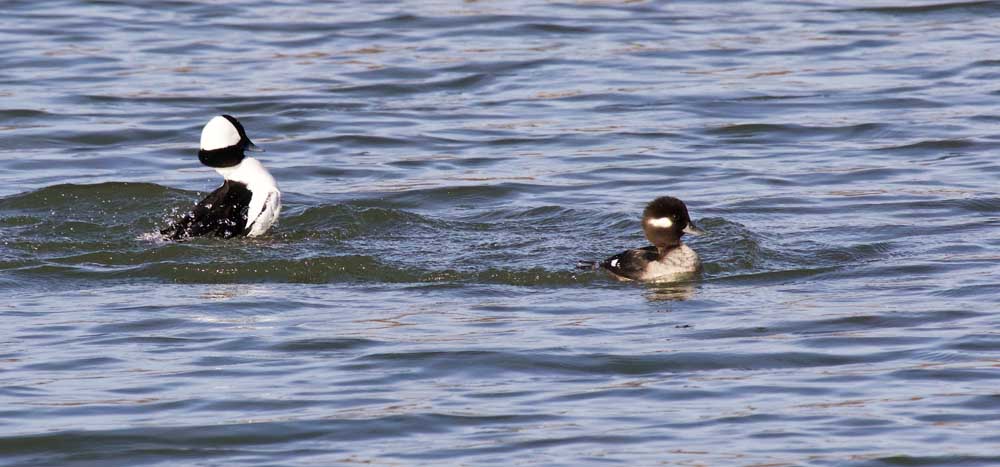Cape D: An amazing birding destination
Published 8:20 am Monday, January 23, 2023

- A visit to the boat launch area is always worthwhile. Waterbirds such as the bufflehead are often seen there.
The brambling, a rare visitor from Eurasia, is still foraging at Cape D with a large flock of dark-eyed juncos, Townsend’s warblers, chickadees, and kinglets. It has been seen in various spots but mainly seems to hang out in the yurt area. Some days, birders report it flitting through the conifers, while others on different days when the wind is quieter report seeing it on the ground foraging with its companions. It is harder to spot when the large flock of birds flits furiously from conifer to conifer. While the presence of this special bird is still attracting birders from a far and across the state, it isn’t the only reason to visit to Cape D.
Trending
A stroll through the campgrounds, especially in the B loop area can be very rewarding. Tack on a look at the confluence area and you can see many species of birds. Yesterday, I was lucky enough to see fourteen species. Thrushes abound right now. The American robin, varied thrush and hermit thrush are sights to behold. Their foraging behavior is worth watching. In addition, they often stay still long enough or show an interesting action pose. Either can be a perfect photo opportunity.
Fox sparrows, and song sparrows are usually seen along the edges of the campsites or roadsides scratching back and forth in the leaf litter to find insects and seeds, a very good reason to leave the leaf litter on our lawns and in our yards until spring. The fox sparrow is slightly larger than a song sparrow and its lower mandible is yellow. It is a darker bird in color than the song sparrow and sports a dark splotch and chevrons on its breast. The song sparrow is heavily streaked and wears a distinct central breast spot. Both species also enjoy eating fruit.
The hermit thrush also forages in leaf litter and on the ground looking for insects, seeds, worms, larvae, and snails. This thrush is generally solitary, especially in winter, hence its name. it is about the same size as a fox sparrow, but its posture is different, more like that of a robin, more upright than sparrows generally are. In addition, its tail is reddish or rusty in color. The hermit thrush is very likely to be seen at Cape D. Two more common thrushes you will see at Cape D are the varied thrush and the American robin. The latter is the most abundant and familiar thrush in North America. Both also. forage in the leaf litter. The robin is interested in insects, and earthworms, while the varied thrush’s interest is in finding insects and caterpillars. Both species also feed on berries and fruit during the winter. The varied thrush’s orange and black head, bluish back and two rusty wing bars are signature ID markings.
Trending
Townsend’s warbler has been appearing in large numbers at Cape D in the campground areas. The large flock as reported by Ebird includes chestnut-backed and black-capped chickadees, and dark-eyed juncos. Ebird also reported and confirmed the presence of a single palm warbler. Its signature ID is a pumping tail, making it easy to identify. Like other warblers it prefers insects but will also eat berries and seeds. It was observed alone not with the large flock. Other notable sightings at Cape D in the yurt area are the northern flicker, brown creeper, American crow, and ruby-crowned kinglet.
Songbirds aren’t the only birds one can see at Cape D. A trip to the boat launch area in the confluence project area provide an opportunity to see other species such as golden-eye, bufflehead, horned grebe, double crested cormorant, various species of gull, bald eagle, black scoter and surf scoter. While these species are not guaranteed, daily, the chances are excellent that at least some of them will be seen, and perhaps, along with other birds not mentioned here. Waikiki is another place to look for birds at Cape D. The pond on the landward edge of the North Jetty, for example, provides cover and food for ducks such as bufflehead, and most recently a trumpeter swan and a small flock of snow geese.
Cape D is an amazing birding destination. Many more species than are mentioned in this article can be seen. I love birding at Cape D, and I am sure everyone interested in birding does too. It is truly an amazing destination. Happy birding!









